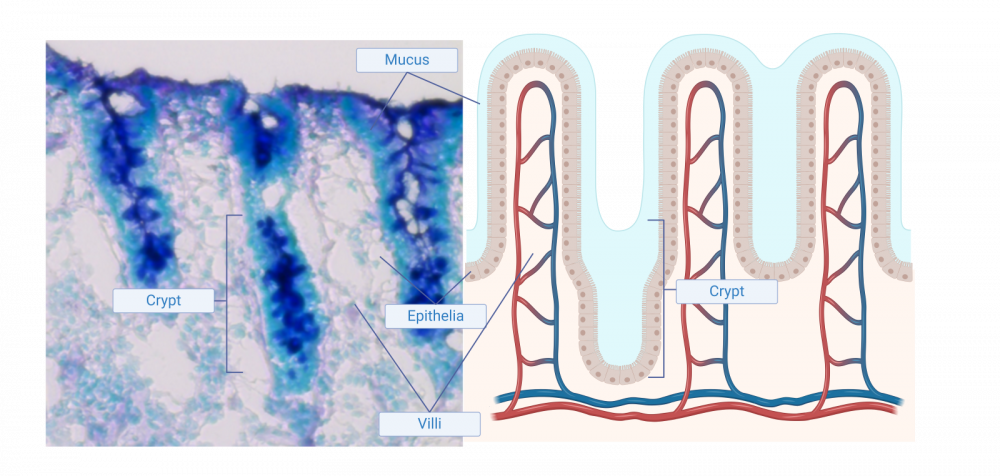Mucus Review
Understanding the critical role of mucus in digestion and drug delivery
From the mouth to the anus, the surface area of the mucosal epithelium of the digestive tract covers approximately 32 m2. These specialised epithelial layers are continually exposed to aggressive and potentially damaging physical, chemical and biological conditions, including physical damage from solid and potentially abrasive foods, gastric acid, bile, digestive enzymes and both symbiotic and pathogenic microorganisms

Figure 1: (Left) Histological section of intestinal tissue with mucus layer stained blue. (Right) Diagrammatic representation of human intestine cross-section
The mucus barrier plays an essential role here, coating these epithelial and protecting the delicate tissues from these challenges while allowing absorption, secretion and host-microbe cross talk.
Mucus is a complex material with variable properties of a viscous liquid, or an elastic solid, depending on type, site and physiological conditions. Epithelial surface mucus forms heterogeneous hydrogels, with water occupying up to 95% of its total volume. The remaining 5% is constituted by DNA, lipids, proteins, and mucin, a highly O-glycosylated glycoprotein which is the primary gel-forming component of mucus gels.
Epithelial surface mucus layers are achieved through the formation and hydration of extensive mucin biopolymers linked via intermolecular disulphide bridges. These biopolymers hydrate significantly on secretion and undergo polymerisation to form the mucus gel. This makes secreted mucins very important biopolymers which are crucial for the function of many epithelial surfaces throughout the human body.
Of these mucins, the MUC2 mucin, which forms the mucus layers of the small intestine and colon, has often been considered as the most researched and understood secreted gel forming mucin. In our review we highlight the structure and function of mucins in the human body and review the literature surrounding the structure, polymerisation and post-secretory organisation of MUC2 mucins/mucin polymers.

Figure 2: Structural representation of secreted gel-forming MUC2 protein.
While the mucus barrier plays a crucial role in drug and nutrient absorption, it is often overlooked in pre-clinical R&D leading to costly failures. At Aelius Biotech, we integrate mucus with gastrointestinal fluids and intestinal epithelia to accurately model the processes of human digestion and absorption in vitro. Get in touch to learn how our models could be applied to your new product development.
Master the Mucus Barrier
Learn how our unique mucus modeling capabilities can accelerate your product development
Speak to an Expert

